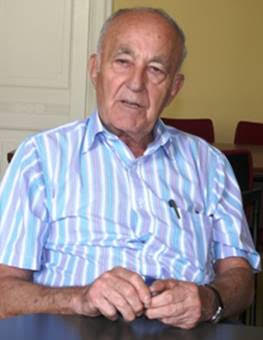
THE VOICE OF INTERNATIONAL LITHUANIA
|
VilNews has its own Google archive! Type a word in the above search box to find any article.
You can also follow us on Facebook. We have two different pages. Click to open and join.
|
Front page
Six post-war giants
- Posted by - (0) Comment
Over the past 20 years I have got acquainted with many Lithuanian-Americans. There are numerous I could have mentioned, but let me at least concentrate on six fine individuals who have made a truly great contribution to their home country. All six are Lithuanian-Americans who have contributed substantially from their land-volatile positions during the post-war years, and over the last 20 years also from inside Lithuania.
One of them was even president for two periods, H.E. President Valdas Adamkus. When I met him at his presidential office in Vilnius in 2005, he concluded the meeting by saying: "I have been fighting continuously for my country, both during and after World War II, from exile and on Lithuanian soil. Yet, after all these years, I must admit that I feel like an outsider in my own country."
Sad words, but unfortunately indicative of how the Lithuanian-Americans often are received when they return home to Lithuania.
Six prominent giants who fought for their
homeland from exile positions in the U.S.
|
|
|
|
|
|
|
|
More about US-Lithuanians in Section 11
- Bookmark :
- Digg
- del.icio.us
- Stumbleupon
- Redit it
- Posted by - (0) Comment
Vilniaus Kamerinis Teatras, October – December:
When Men Played God!
The Story of Anne Frank
A conversation with Alicia Gian, co-director of Kai žmonės vaidino Dievą!
Emily Šaras, Associate Editor
October 21, 22, 23, 28, 29. November 11, 12. December 20. 18:30
Vilniaus Kamerinis Teatras (Vilnius Chamber Theatre)
TICKETS: www.bilietai.lt
Sponsored by the United States Embassy, Vilnius
Anne Frank, the girl who has been the voice for millions of unheard voices from the Holocaust, is being heard in Vilnius for the first time in Lithuania’s history. In a newly adapted script by Mr. Marius Mačiulis, nine of Vilnius Chamber Theatre's actors will tell the story of family, hope, death and most importantly love. Co-Director of the production, Ms. Alicia Gian, hopes for the audience to be emotionally moved by the production, and seeks to inspire viewers to “be moved to action - moved to talk about and act upon social injustices that are occurring in our neighborhoods, cities, countries and world today.” In the words of Anne herself, "How wonderful it is that nobody has to wait a single moment before starting to improve the world" – and the Vilnius Chamber Theatre eagerly anticipates the October 21st premiere of the production.
- Bookmark :
- Digg
- del.icio.us
- Stumbleupon
- Redit it
- Posted by - (0) Comment
OIL, GAS AND NOW POTENTIALLY 3 NEW
NUCLEAR PLANTS IN THE BALTIC AREA:
Ticking time bombs?
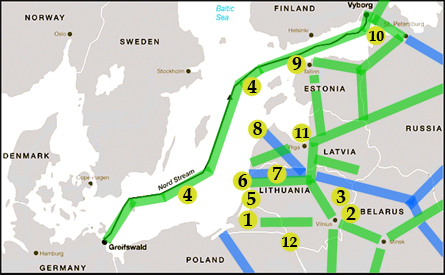
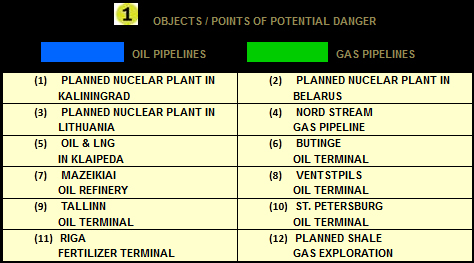
Text: Aage Myhre, Editor-in-Chief
aage.myhre@VilNews.com
It surprises me that the warning bells are not ringing much louder in Scandinavia and the rest of northern Europe, as I presume it now must be well known what is going on here in the Baltic region with regards to old as well as new energy installations, and potential disasters connected to them.
Oil, gas and polluting elements from World War II and later have long been known concern factors. Now the situation has become further worrying by the fact that Russia has built an underwater gas pipeline from St. Petersburg to Germany, and not least that it is planned no less than three (!) new nuclear power stations very close to the Baltic Sea's southern shore.
We all remember Chernobyl 25 years ago. We all remember the terrible disasters in Japan earlier this year, in a nation that claimed to have the world’s safest nuclear installations – a claim that showed yet again that nuclear plants will never be safe enough. They are always ticking time bombs.
For the whole time nuclear plants operate they emit radiation to their surroundings, often causing illness and genetic damage to humans, animals and nature. No nuclear installation, wherever it was, has ever been really safe.
I can hardly imagine living in Vilnius any more if that means I will have to live surrounded by three nuclear plants, just kilometres away. In particular, I would be extremely worried about my children and their descendants. Living in a neighbourhood of nuclear reactors is simply not a chance I can take.
Can Europe accept that three nuclear power stations are built right here, at its very ‘epicentre’?
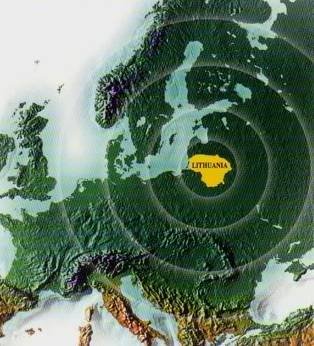
- Bookmark :
- Digg
- del.icio.us
- Stumbleupon
- Redit it
- Posted by - (0) Comment
NOW IN CHICAGO!
National Lithuanian
American Hall of Fame

Bringing attention to Lithuania’s epic history and the global contributions of its people today in the arts, sciences, sports, politics, and economics.
Football greats Dick Butkus and Johnny Unitas, film director Robert Zemeckis, screen stars Charles Bronson, Ann Jillian, and Ruta Lee, musicians Benny Goodman and Bob Dylan, author J.D. Salinger, and Senator Dick Durbin are but a few famous individuals with roots in a nation that was once the largest and amongst the most powerful in Europe, Lithuania. Their achievements will now be commemorated by The National Lithuanian-American Hall of Fame (NLAHF).
- Bookmark :
- Digg
- del.icio.us
- Stumbleupon
- Redit it
- Posted by - (0) Comment

Was Columbus
a Lithuanian prince?
|
SON? |
FATHER? |
Historian unmasks Columbus’ true identity.
Will Lithuanians be able to add another page to their already epic history? Will the National Lithuanian American Hall of Fame (NLAHF) have yet one more candidate for induction? Daine Jablonskyte-Marquez and Jon Platakis, members of the NLAHF, tracked down historian Manuel Rosa at his job at Duke University, to enlighten us on his 20 plus years of research into the identity of Christopher Columbus.
Confidently, and with primary source documents to verify his assertions, Rosa states, “Columbus was a royal prince, son of a Portuguese noble lady and exiled King Wladyslaw III (a direct descendent of one of Europe’s greatest ruling dynasties, Lithuania’s Gedeminian dynasty). He was hiding his identity from the public at large but the courts of Europe knew who he was.” Pointing to documentation in his new book, COLON. La Historia Nunca Contada (COLUMBUS. The Untold Story) recently published in Spain, and to be published May 2012 in Poland, that Columbus’ marriage in 1479 to a Portuguese noblewoman, who was a member of the Portuguese military order of Santiago, required the approval of the King of Portugal, a procedure reserved only for someone of major importance. “This new Portuguese document alone,” stated Rosa, “makes the entirety of Columbus’ Italian history false.” Rosa’s evidence appears irrefutable that Columbus, who had been housed in the palaces of the nobility, had access to royal courts, and married into nobility, could not be, as our history books tell us, the son of a poor weaver from Genoa.
So, who was Christopher Columbus, if not a poor weaver’s son from Genoa? Rosa believes that his true identity was Prince Segismundo Henriques which was concealed in order to protect his father. All of Rosa’s evidence points to Wladyslaw III, king of Poland and Lithuania as being the father of Christopher Columbus. Rosa suggests that there is proof the king survived the Battle of Varna in 1444 against the Ottomans and lived in exile on the island of Madeira under the name of “Henrique the German,” married to a Portuguese noblewoman.
- Bookmark :
- Digg
- del.icio.us
- Stumbleupon
- Redit it
Awesome autumn!
- Posted by - (0) Comment
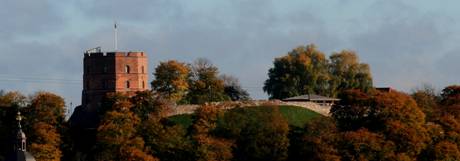
Autumn in Vilnius. Gediminas Tower, October 2011.
Photo: Aage Myhre.
And we in VilNews celebrate the autumn by introducing new Sections! Click the buttons 3 – 8 above and see for yourself.
- Bookmark :
- Digg
- del.icio.us
- Stumbleupon
- Redit it
- Posted by - (0) Comment
NEW!!
VilNews section 7:
VILNEWS E-SHOP FOR
LITHUANIAN PRODUCTS
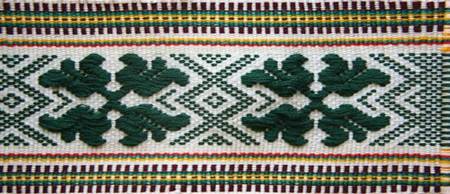
We in VilNews want you who read us to feel connected to Lithuania, wherever in the world you live. We have now decided to expand our offerings to include various Lithuanian products that we think many can enjoy and benefit from.Lithuanian music, literature, art, linen, food-related products and more are now for sale via our VilNews E-Shop. Welcome to what we hope will bring you even closer to Lithuanian traditions and specialties!
- Bookmark :
- Digg
- del.icio.us
- Stumbleupon
- Redit it
- Posted by - (0) Comment
Russia has ambitions
few in the west
are aware of
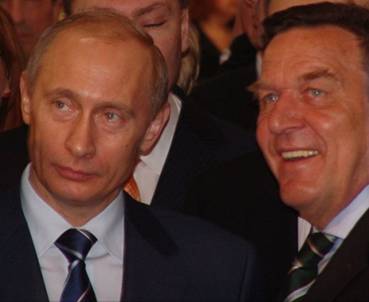
Vladimir Putin and Gerhard Schröder.
Photo: Wikipedia.org.
Text: Aage Myhre
Editor-in-Chief
aage.myhre@vilnews.com
Professor Vytautas Landsbergis continuously warns his country and the world about the Russian threat. I think these warnings sometimes are a bit excessive, but I’m also afraid that Western Europe will continue acting and thinking with their blinders and ear flaps on. Yeltsin's Russia was perhaps more or less loose tooth, but Putin's Russia is definitely not! And Putin has ambitions. Big ambitions. I have learned this over my years in his front yard. It surprises me constantly to see how little Western leaders worry.
Putin has publicly stated that the dissolution of the Soviet Union was the most tragic has happened in Russia's history. It is an attitude not only Eastern Europe should be scared of. Western Europe and the rest of the world will also be greatly influenced if Putin gets what he wants.
Energy is the weapon. This applies not least to gas, which the rest of Europe is highly dependent on. The state-owned Russian gas company Gazprom is Putin's main tool in the efforts to achieve more and more control in Europe. It is often through this company that many spies and agents are paid.
Baltic states are particularly vulnerable. These relatively poor countries are already paying 50% more for gas received from Russia than Germany does. And every time they do something to achieve independence from Russian supplies of gas, oil or electricity, Putin is ready with the finger on the switch. Ready to turn off the power, once again to make a blow to the Baltic States. Unfortunately, he has more than enough power to threaten and trump through most of the restrictions.
I put big question marks at Germany's former chancellor, Gerhard Schröder, for his roles in his native country and for Europe. Schröder cultivated very close ties to Putin, even as Chancellor, ostensibly to strengthen the "strategic partnership" between Berlin and Moscow.
Together they planned the now realized gas pipeline under the Baltic Sea, exclusively between Russia and Germany. Only a few days before he resigned as Chancellor Schröder signed the agreement without consulting with his EU counterparts, and immediately after his retirement he joined the board of the German-Russian joint venture.
- Bookmark :
- Digg
- del.icio.us
- Stumbleupon
- Redit it
- Posted by - (0) Comment
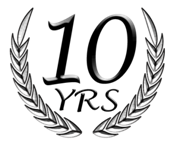

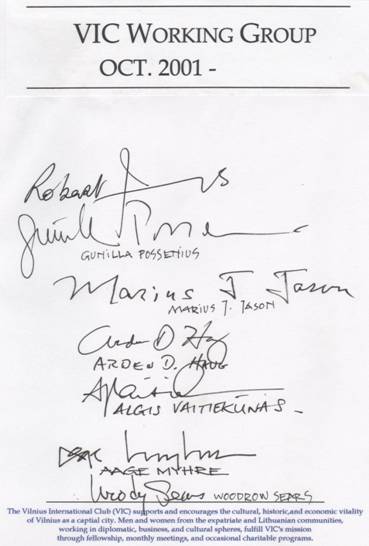
Above: Signatures by VIC’s initial ‘working group’
in October 2001, 10 years ago.
Visit the VIC web page:
http://vilnius-international-club.com/
Vilnius International Club (VIC) has since October 2001* been a leading club and a dynamic meeting point for local people with international interests and for expatriates from many countries. The club’s mission is to support and encourage the cultural, historic, and economic vitality of Vilnius as a capital city and of Lithuania as an outstanding historic and contemporary scene for interaction and constructive activities between fine people from many countries. Men and women from the expatriate and Lithuanian communities, working in diplomatic, business, and cultural spheres, fulfil VIC’s mission through fellowship, monthly meetings, and occasional charitable programmes.
*VIC started its activities in October 2001, and was formally established in February 2002.
***************************************************************************************************
Opinions about VIC over the years
VIC has built a new bridge...
VIC is a refreshing initiative that has built a new bridge between local Lithuanians and foreigners in Vilnius. The success of the Club is a result of good balance between many different nationalities and great variety of cultural and social activities. It is important to maintain high share of Lithuanians in VIC as expatriates do not need a club to meet foreigners..
- Bjarne-Espen Christiansen, Manager of Scandinavian Airlines (Denmark)
The VIC format is very unique...
I think VIC format is very unique. It encompasses many features that many other clubs/organizations, between which we share our off-duty time, lack. It has planned events schedule, as well as beautiful ad-hoc social surprises; and, most importantly, diversity of people and themes.
- Vygandas Juras, Partner of Baltcap Management (Lithuania)
Potential to integrate Vilnius community into modern Europe...
It is a creative organisation with huge potential to integrate Vilnius community into modern Europe.
- Daiva Vitkute, Managing Director, Vilnius Consult (Lithuania)
I am extremely grateful for Vilnius International Club actions...
I am extremely grateful for Vilnius International Club actions enhancing cultural, historical and economic life in our city. I am also thankful for charity programs set for unprivileged inhabitants of the city. The variety of activities you accomplish in the city contributes to the philanthropic movement development as well as assists with the implementation of tangible social projects in Vilnius...
- The Mayor of Vilnius City Municipality, Arturas Zuokas
- Bookmark :
- Digg
- del.icio.us
- Stumbleupon
- Redit it
- Posted by - (0) Comment
Non-Jewish witnesses to
Holocaust in Lithuania?
Washington, D.C. – The United States Holocaust Memorial Museum is looking for people to share their experiences of life in Lithuania during World War II and the Holocaust. Ina Navazelskis of the Museum’s Oral History Branch is particularly interested in speaking with non-Jewish Lithuanian witnesses to the Holocaust who now live in the U.S. or Canada.
“If you have a story to tell, or know somebody who does,” Navazelskis told VilNews, “I hope you’ll contact me. I want to hear your story and how it intersects with the Holocaust.”
- Bookmark :
- Digg
- del.icio.us
- Stumbleupon
- Redit it
- Posted by - (0) Comment
Reflections from Dainų Šventė
“Funk and dance,
not folk song, is our life,
our lifestyle”

Breakdancer executing a one-handed spin to the song Jump
Around by House of Pain in Kalnu Parkas, Vilnius,
on the opening night of Dainų Šventė, 2009
Text: Emily Šaras
Associate Editor
It was a misty and moist afternoon in the summer of 2009, a year that celebrated Vilnius, Lithuania as a European Capital of Culture. Just as eager as I was sleep-deprived, I started my ethnomusicology research project that night by observing the opening Dainų Šventė event. My particular strain of jet lag – the seven-hour difference between Vilnius and Boston – was still a haunting presence, leading me to wander zombie-like throughout the streets of Senamiestis that evening. But even in my undead state, I was on a mission: like the hundreds of Lithuanians gathered in the city center, I had come to the opening night festivities of Dainų Šventė to hear my first taste of Lithuanian dainos (folk music) performed live. A hedgehog in the fog, I sought musical truth to clear out my haze.
- Bookmark :
- Digg
- del.icio.us
- Stumbleupon
- Redit it
- Posted by - (0) Comment
Lithuania’s friends
and brothers

Soviet propaganda poster during the winter
war with Finland, 1939-1940.
From Wikipedia.org.
“Do you know how we Fins look upon the Russians as brothers or friends?” A Finnish friend of mine asked, and soon he revealed the answer: “We consider them our brothers, of course, because friends you can choose yourself.”
Lithuania of today is facing the problem Finland has had to deal with for many decades, and is now learning the art of keeping close ties to the West without irritating Russia too much. But Lithuania has got many more “friendship dimensions” to tackle; to keep up the mood towards the EU and to balance its relations between America and Western Europe.
Many would even say that it is questionable who are the real friends of Lithuania within Lithuania itself, or as a columnist recently wrote on this issue: “All these scandals and infights among politicians are no more than battles of personal interests which have very little if anything to do with interests of the nation.”
But first back to Russia, where a recent poll gives quite interesting information on how ordinary Russians view the relations with other countries. According to the poll, Russia's best friends are Belarus (47 percent), Kazakhstan (33 percent), China (24 percent), Germany (22 percent) and India (15 percent).
Russia's main foes are Latvia (46 percent), Georgia (44 percent), Lithuania (42 percent), the United States (37 percent), Estonia (28 per cent) and Ukraine (27 percent).
Lithuania is, in other words, considered one of Russia‘s top foes.
- Bookmark :
- Digg
- del.icio.us
- Stumbleupon
- Redit it
- Posted by - (0) Comment
First and second round of Lithuanian Litas

Front and back of 1922, 50 Centai banknote.
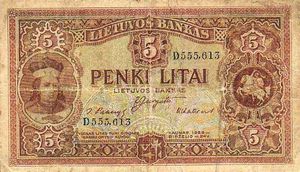
Front and back of 1929, 5 Litai banknote.

Front and back of 1922, 100 Litai banknote.
Photos courtesy of Colnect.
Auksinas
to Russian Ruble
to Ostmark and Ostruble
to Litas
to Soviet Ruble
to Litas
– the first and second introduction of the Lithuanian Litas
The official currency of the Republic of Lithuania is the Litas. Twice it has been the official currency. The first period was during the inter-war years when Lithuania regained its independence from Imperial Russia and the second period began in 1993, after Lithuania regained its independence from Soviet Russia, and is still the official currency. We would like to share with you some interesting information about what was involved in the creation of the Litas and its reintroduction.
- Bookmark :
- Digg
- del.icio.us
- Stumbleupon
- Redit it
- Posted by - (0) Comment
Lithuanian music on
BBC Radio 3

At last, after many years of campaigning, the British Broadcasting Commission and its classical music channel Radio 3 has realised that classical music exists in Lietuva.
On 22 September 2011, UK based Lithuanian pianist Evelina Puzaitė appeared on BBC Radio 3s programme In Tune in a belated celebration of the 100th anniversary of the death of Čiurlionis. Despite my pleas at the time, Radio 3 ignored the actual anniversary on 10 April, but made amends with the In Tune programme which was broadcast on what would have been Čiurlionis' 135th birthday.
As well as playing six of Čiurlionis' piano pieces, Evelina gave a very professional account of his achievements in the field of music composition, art and literature. The presenter Sean Rafferty, said at the end that the BBC would pay special attention to Čiurlionis in his anniversary year.
Earlier on 16 August, the same programme featured the British Presteigne Music Festival which this year promoted Lithuanian music. As well as interviewing the Artistic Director who explained that it was the first festival of Lithuanian music to be held in Britain, a young British violinist Tamsin Waley-Cohen played Barkauskas' Partita.
Having been a thorn in the side of the BBC since 2003 in my campaigning for Lithuanian music to be played on Radio 3, I immediately emailed a letter of thanks, pointed out that the Čiurlionis anniversary had been ignored, and that Evelina Puzaitė and the Cosima Piano Quintet would be performing at an anniversary concert on 25 September at the Royal Academy of Music in London.
The outcome was an invitation for the performers to appear on In Tune. As I don't personally know Evelina and the other members of the Quintet, I passed the invite on to Daiva Parulskiene, the Cultural Attaché at the Lithuanian Embassy in London, who made the necessary arrangements.
Three days after her In Tune appearance, Evelina Puzaitė played a number of Čiurlionis' piano preludes at the very enjoyable anniversary concert in London. The string players of the Cosima Piano Quintet followed on with a performance of Čiurlionis' String Quartet, and Evelina joined the string players to end the concert with an exciting performance of Robert Schumann's Piano Quintet in C minor op 44.
My next BBC goal is a Radio 3 Composer of the Week series. I first suggested that in 2004 - even gave them a synopsis for the five programmes to be broadcast Monday to Friday (though then the plan was for Lithuanian music including Čiurlionis). Recent correspondence, including loaning the BBC my boxed set of Čiurlionis CDs bought from the Čiurlionis Museum in Kaunas, gives a glimmer of hope, and no doubt the In Tune appearances will help in the cause to get Lithuanian music performed and broadcast in Britain.
What is also needed now is for Lithuanian Radio to send the BBC a steady stream of Lithuanian music to be broadcast on Through the Night and hopefully, during the day as well. I look forward to the day when Lithuanian music is as well-known in Britain as Estonian music now is.
Tony Olsson, Ilfracombe, United Kingdom
- Bookmark :
- Digg
- del.icio.us
- Stumbleupon
- Redit it
- Posted by - (0) Comment
VilNews had 100.000 visits in 6 months!
VilNews has been online for a little over six months now. When we started, our goal was to reach 100 000 visits in ONE year. Experts thought we were kidding. The fact is that we reached the target in just six months!
Thanks to you, dear readers!
Among the things we're going to focus on this autumn and winter, is to tell you more about this nation's relations with other countries around the world. For better or worse. Open, forthright talks will still be our standards.
Please write us with your ideas and comments!
The illustrations below show some characteristics of the nations we will cover, things that make them known here, presented in Lithuania’s flag colours.
 ARTICLE NO. 1 HUNGARY |
 ARTICLE NO. 2: ITALY |
 ARTICLE NO. 3: KARAIMS |
|
 ARTICLE NO. 4: DENMARK |
 ARTICLE NO. 5: JAPAN |
 ARTICLE NO. 6: CANADA |
|
 ARTICLE NO. 7: ARTICLE NO. 7:GERMANY |
 ARTICLE NO. 8: CHINA |
 ARTICLE NO. 9: INDIA |
|
 ARTICLE NO. 10: SWEDEN |
 ARTICLE NO. 11: TATARS |
 ARTICLE NO. 12: USA |
|
 ARTICLE NO. 13: RUSSIA |
 ARTICLE NO. 14: BELARUS |
 ARTICLE NO. 15: ICELAND |
|
 ARTICLE NO. 16: TURKEY |
|
 ARTICLE NO. 18: THE UK |
|
 ARTICLE NO. 19: NORWAY |
 ARTICLE NO. 20: POLAND |
 ARTICLE NO. 21: FRANCE |
|
|
|
ARTICLE NO. 22: THE LITVAKS (LITHUANIAN JEWS) |
||
Lithuania has an amazing 700-year history as an international melting pot. This has been especially evident since 1323, the year Grand Duke Gediminas founded Vilnius as Lithuania’s capital city and immediately decided to invite merchants, craftsmen, bankers, farmers, and soldiers from all Europe to come to the new capital, guaranteeing all freedom of beliefs and good working conditions. Vilnius became international, though with less of German or Scandinavian influence, as one could expect, rather influenced by Italy and Mediterranean ideas – greatly different from the other two Baltic capitals where Hanseatic influence became dominant.
VilNews will over some time this autumn publish articles about impacts of foreign nations and cultures here. We also welcome you, dear readers, to share with us information you may have about ‘foreign footprints in Lithuania’.
CLICK HERE TO READ ON WHITE BACKGROUND…
- Bookmark :
- Digg
- del.icio.us
- Stumbleupon
- Redit it
How many crosses on ‘Hill of Three Crosses’?
- Posted by - (1) Comment

Photo: Wikipedia.org.
By KR Slade
The hill behind the castle tower in the Old Town of the city of Vilnius--the capital of Lithuania, is called ‘The Hill of Three Crosses’. So, how many crosses are on the Hill of Three Crosses ? Six ! Or nine, if you count shadows . . .
In the 14th century, according to legend, pagans killed seven Franciscan monks on this hill. Three monks were hung on the hill, and four were thrown in the river. Three wooden crosses were erected on this hilltop in the 17th century. Thus, the hill got its name.
In 1916, before the first Republic of Lithuania (1918-1939), the wooden crosses were replaced with an ensemble of three, more monumental, reinforced-concrete crosses. They were hollow, about two feet square and about three inches thick. The cross-arms span about eight feet; the height is about eighteen feet. The three-dimensional relief faces reflect light and shadow.
In 1950, the Soviets blew-up and buried the three concrete crosses, which are now placed on the ground just below the final summit climb of the hill. The old, raw concrete crosses are in-tact, but broken at their bases that expose their steel reinforcement rods . The twisted steel rods evidence an amount of force used in their attempted ruin. Amazingly, they were not completely destroyed. They remain now triumphant, on the ground, the paint long-since worn away by weather, neatly displayed on a grassy presentation, about fifty feet from the summit. The three recumbent crosses, still working in their retirement, make a resurrected statement of faith.
The newer three crosses, which since 1989 crown the hilltop vista, were constructed according to the previous general plans. But, there are visible differences in the frontal surfaces of the older and newer structures. In 1991, Soviets here became extinct.
I had mentioned to a local friend that I wanted to go to the Hill of the Three Crosses. He replied, “Why? It’s a hill. With three crosses. You can see the crosses from everywhere in the city.”
No. The Hill of Three Crosses has six crosses. Yes, you can see the three crosses from everywhere in the Old Town. But it’s the other three crosses--the one’s resting on the ground--the old retired ones, which vividly tell the whole story.
- Bookmark :
- Digg
- del.icio.us
- Stumbleupon
- Redit it
VilNews e-magazine is published in Vilnius, Lithuania. Editor-in-Chief: Mr. Aage Myhre. Inquires to the editors: editor@VilNews.com.
Code of Ethics: See Section 2 – about VilNews. VilNews is not responsible for content on external links/web pages.
HOW TO ADVERTISE IN VILNEWS.
All content is copyrighted © 2011. UAB ‘VilNews’.

 Click on the buttons to open and read each of VilNews' 18 sub-sections
Click on the buttons to open and read each of VilNews' 18 sub-sections 

 Valdas Adamkus.
Valdas Adamkus.








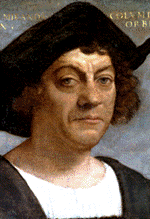
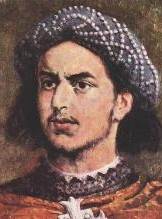


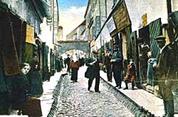
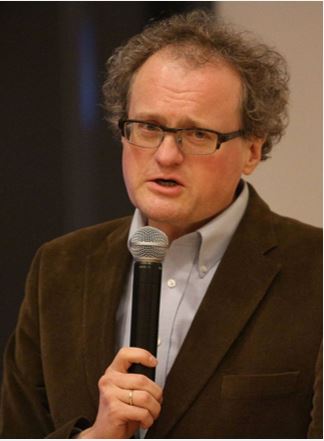

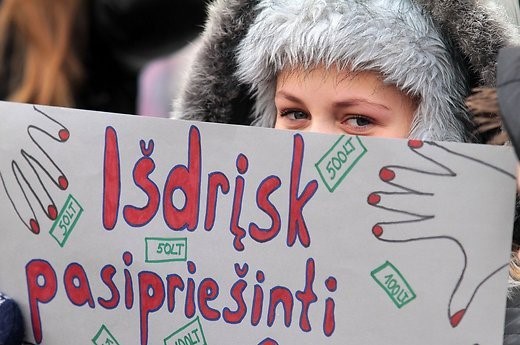


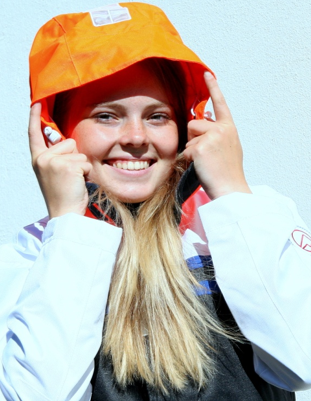
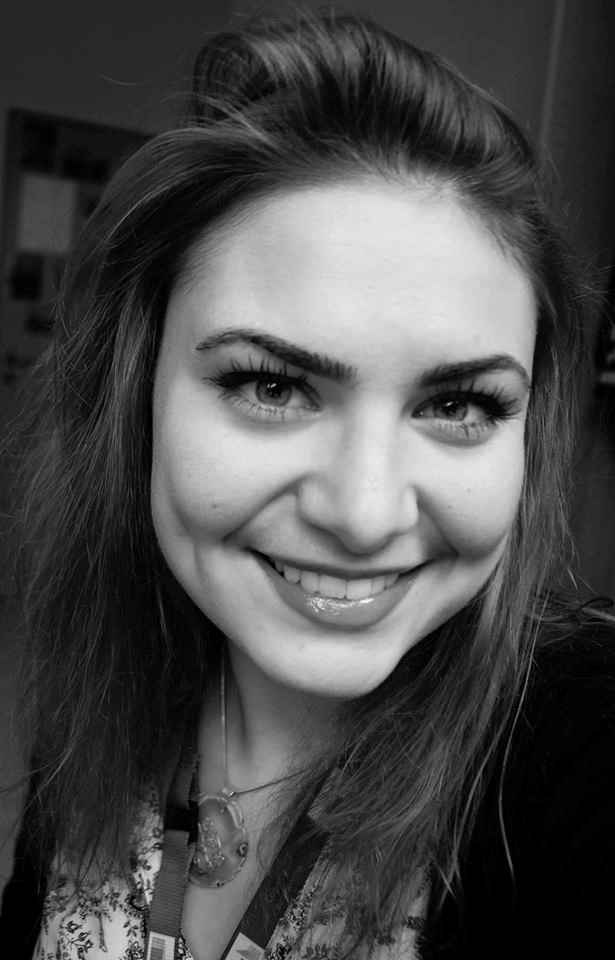

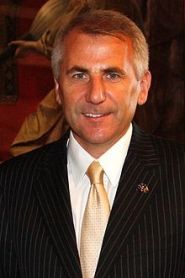
.jpg)
